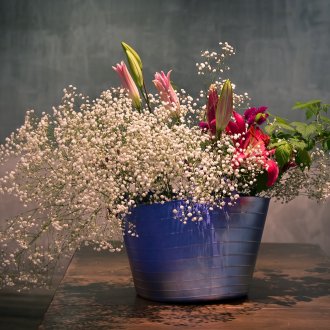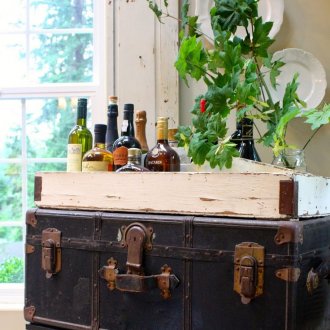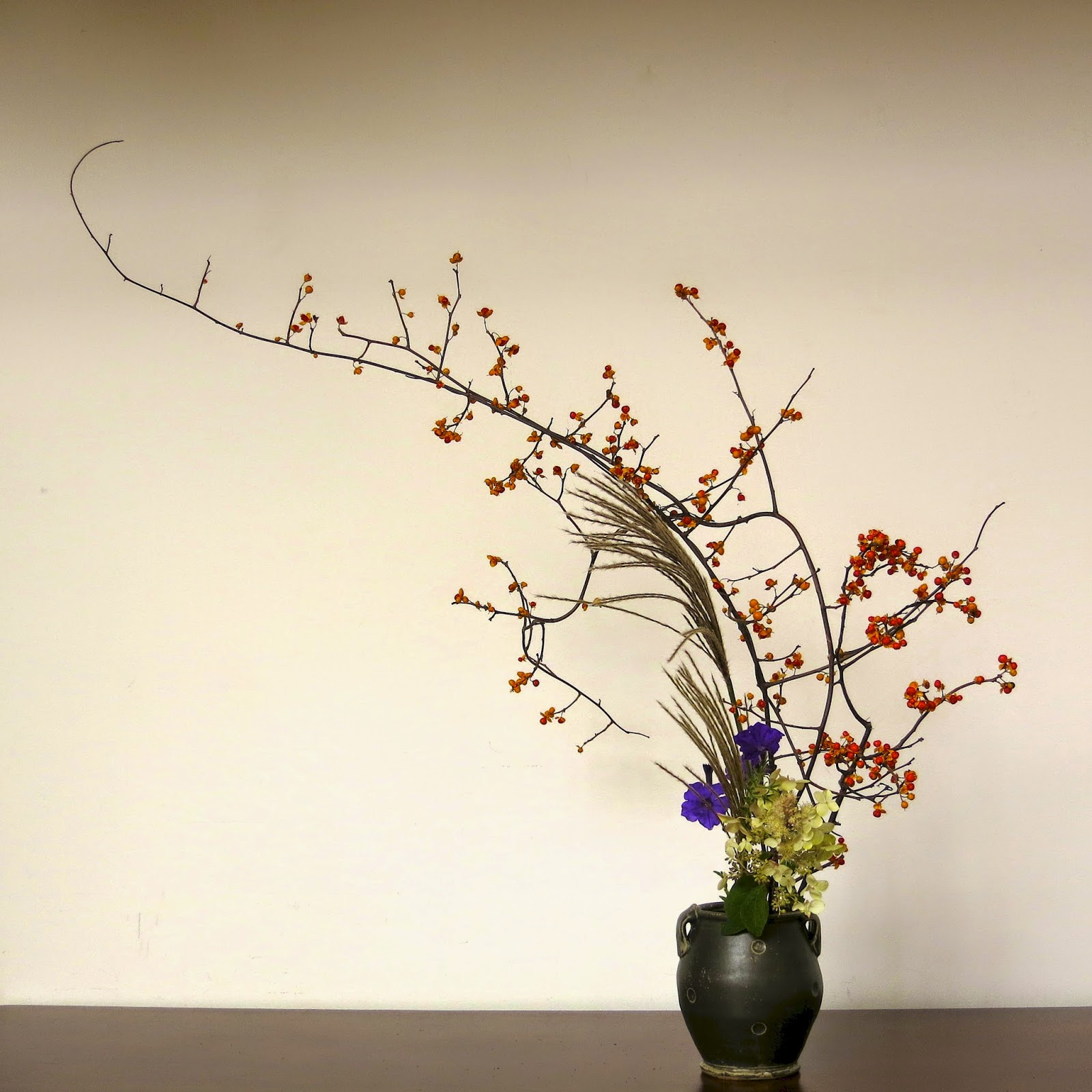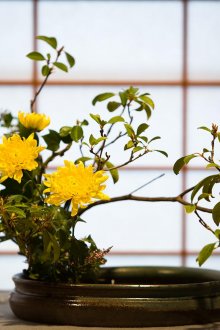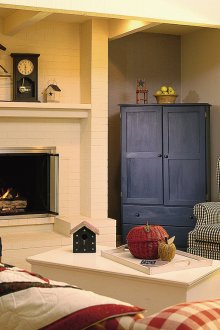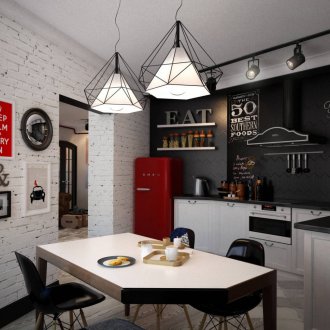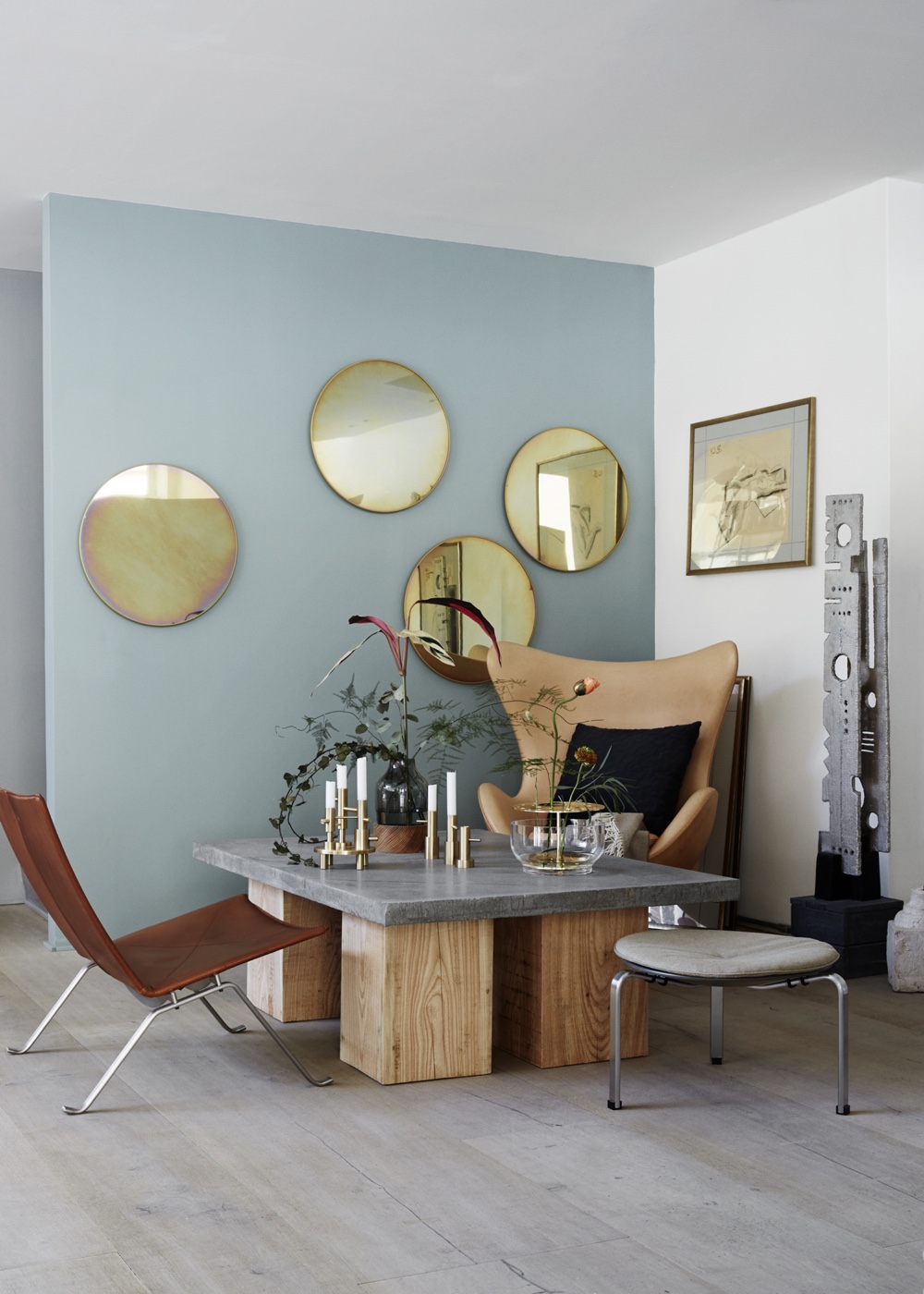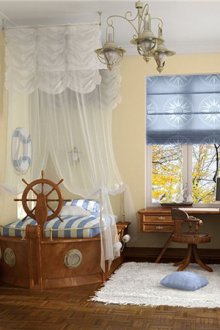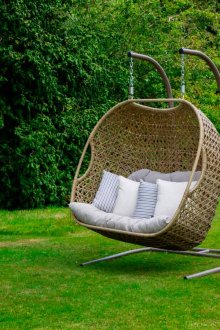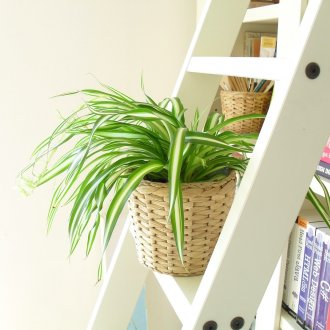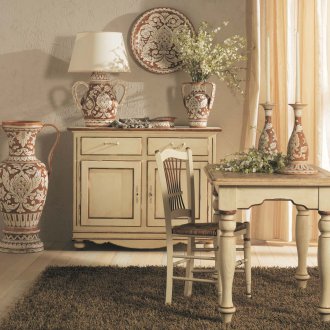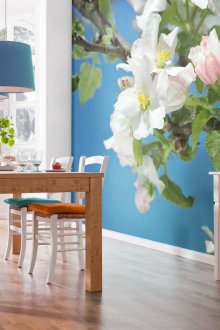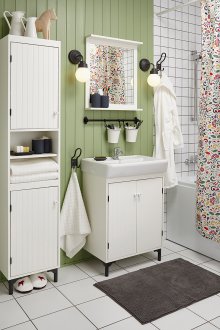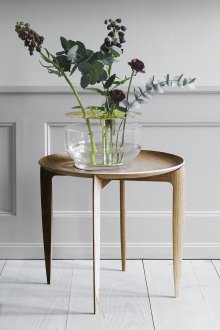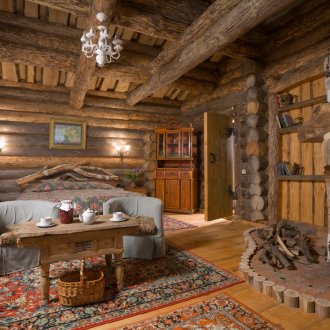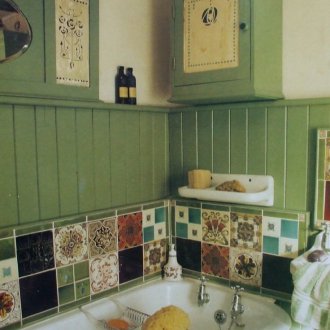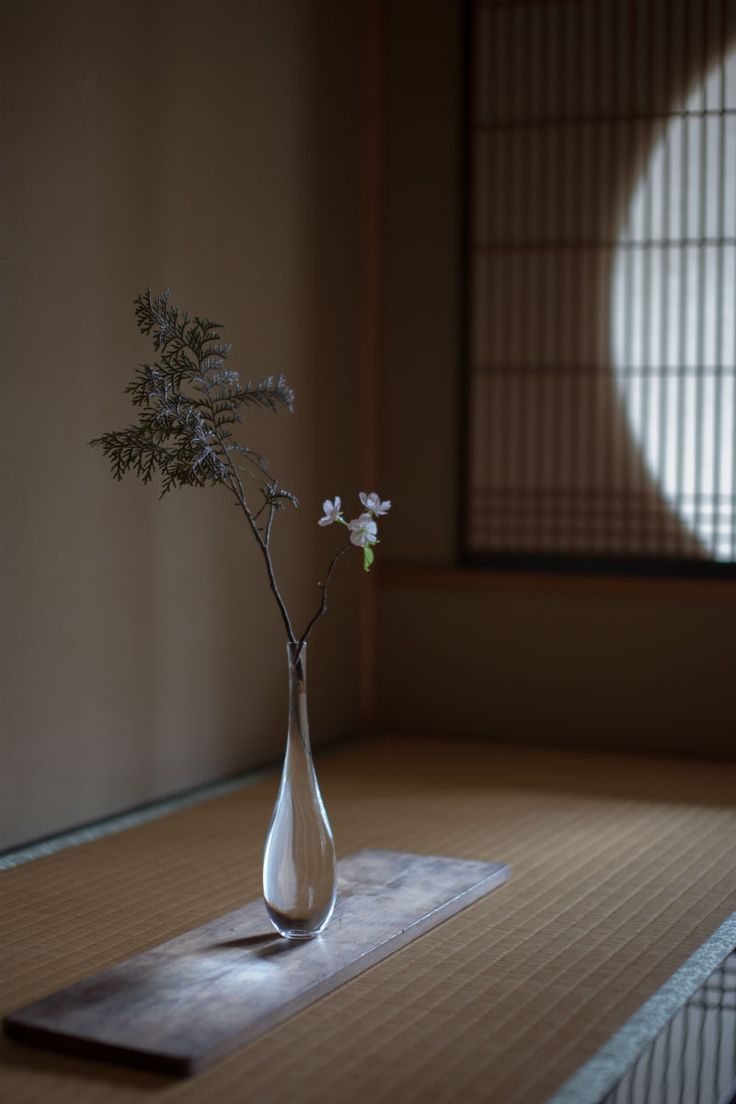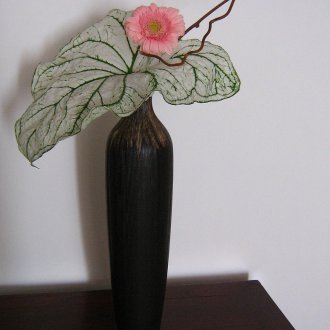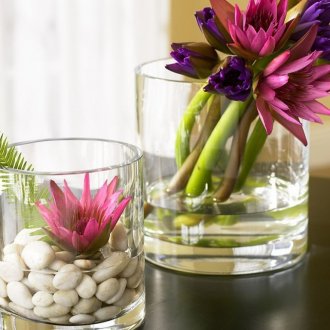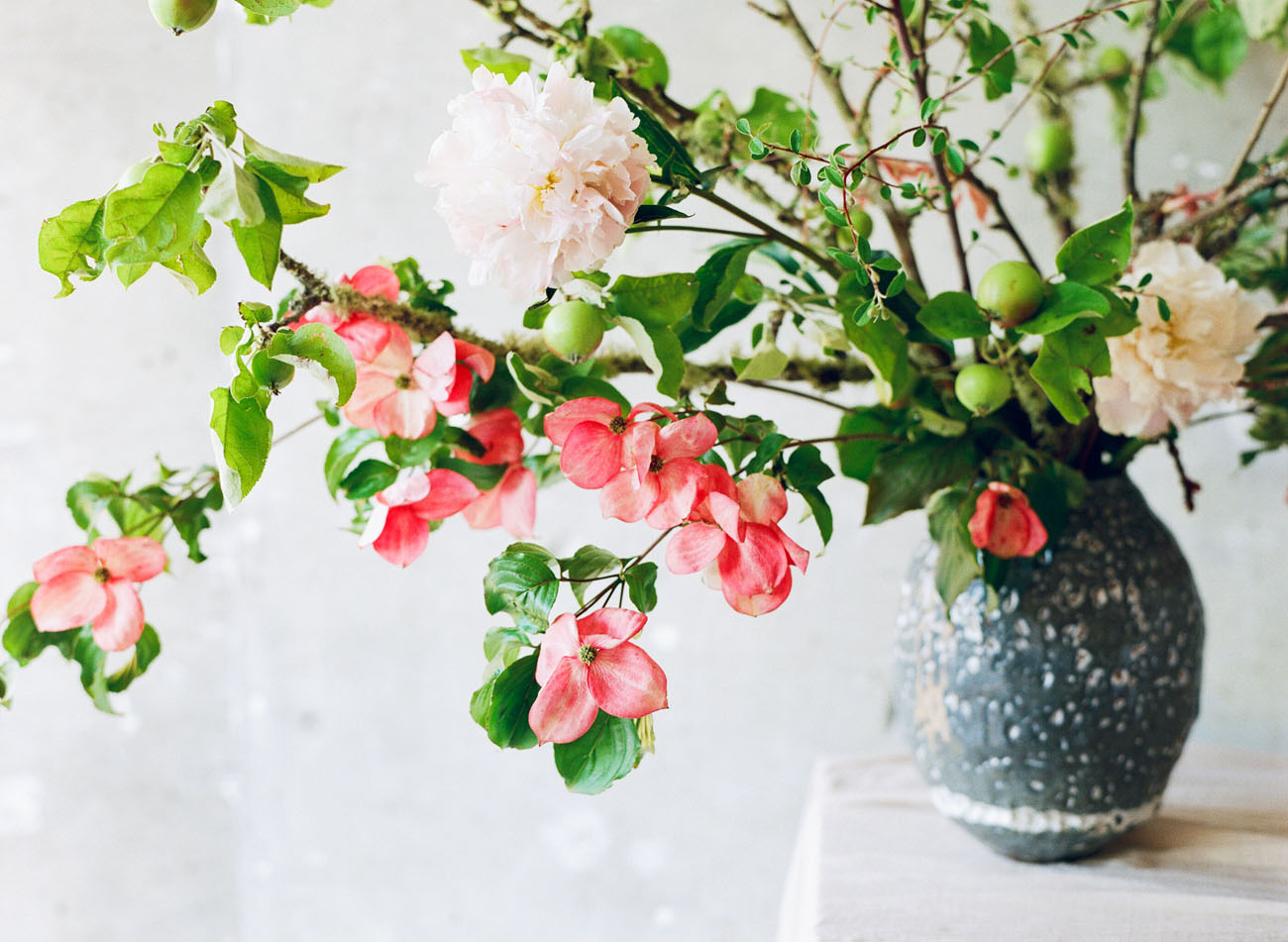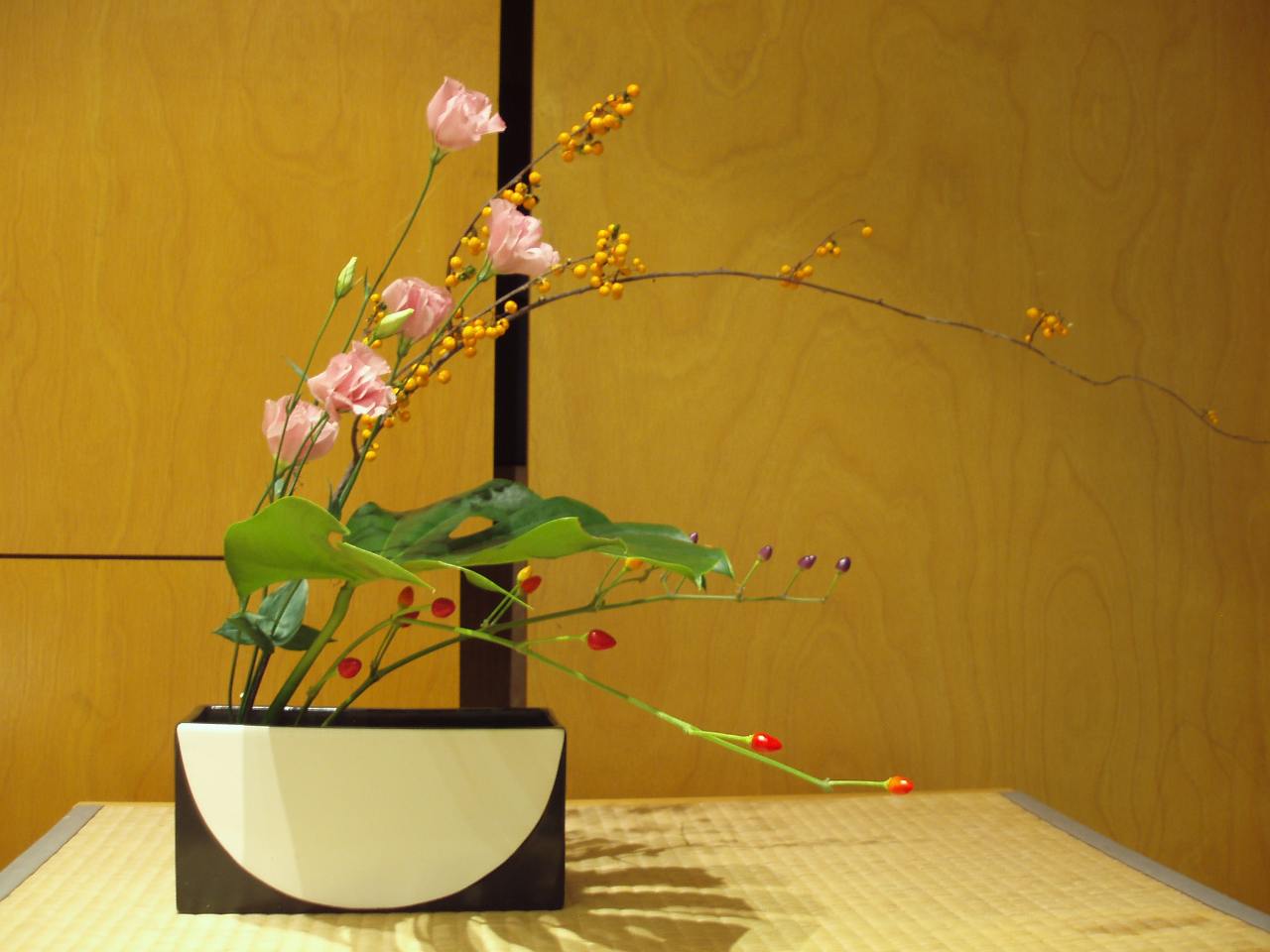Ikebana in the decor of the interior - Japanese grace (35 photos)
The art of ikebana came to us from Japan. There it originated and is extremely popular to this day, which is not surprising, because with the help of floral arrangements you can decorate any interior. Unlike ordinary bouquets in vases, beautiful ikebans can create an atmosphere of elegance, emphasize important details in the setting and testify to the good taste of the owners of the house.
Anyone can understand the art of ikebana, there is nothing complicated in it. The main thing is to know the basic principles of composing compositions and apply all your imagination and desire to the creative process, free up the flight of thought and turn on the imagination. For more experienced florists, it will be useful to master the different styles of ikebana, to find out the meaning of some of its elements, so that with their help they attract luck, love, material wealth into their lives. In addition, such hand-made gizmos can become a gorgeous gift to friends and relatives.
Ikebana in the interior
Japanese ikebana is the best suited for home decor. To harmoniously fit this beautiful composition into any environment, you need to follow this algorithm of actions:
- Choose a place for her.
- Decide on the lighting.
- Define the color palette of the future composition.
- Choose a style and outline the main elements of ikebana.
The location of the exotic bouquet should itself indicate its future shape. It is worthwhile to carefully examine the space of the room to determine the place that ikebana perfectly fills with itself and will not bother anyone. It can be placed in any room on various empty shelves, tables, window sills and even on the floor.
When choosing a place, you must also take into account the level of lighting. It is undesirable to put the decoration under direct rays of the sun, as its bright components will quickly lose color. On the contrary, in a too dark corner, stylish decor may simply not be noticed.
Drawing up ikebana should begin with a choice of a common color scheme. And here it is better to adhere to the principle of harmonious combination. The main color in the bouquet should be either in sharp contrast with the color of the walls or furniture, or emphasize their tone, representing a more saturated version of them.
By the interior of each room in the house you can make ikebana suitable topics. The peace of the bedroom is perfectly complemented by lively floral arrangements that can be changed depending on the time of year. In the bathroom you can put a bouquet with the theme of the sea, lake and water, using elements such as reeds, shells, pieces of coral, colored pebbles. The living room as the center of the house should contain the most vivid and memorable decor items, it will be better if the components of these flower arrangements can be changed depending on some event or holiday.
Materials for ikebana
How to make ikebana without any experience? You can attend special courses, but they are not in every city. It is much easier to master the art of ikebana on your own, it’s good that in the era of the Internet you can find a lot of information on this topic.
First you need to stock up with the material necessary for creativity. Here a lot will depend on imagination, because modern styles of Japanese compositions suggest the presence of not only natural material, but also elements of plastic, metal, cardboard, glass or leather. However, there are three main components, of which any ikebana is composed:
- vessel;
- kenzan (stand for holding elements);
- the components themselves.
The choice of vessel will be largely determined by the shape of the future composition. It can be vases, flowerpots, flat ceramic bowls, glass saucers or even wicker baskets. An interesting design find is a saw cut of a thick tree branch with holes, which can be used instead of a vessel, placing the components of a bouquet in it.
A stand is placed in the vessel, which can also be made of various materials, for example, metal or plastic. There are stands from a special spongy substance in which you can fix the branches in the desired position. Fastening can also occur with the help of foam bars, plasticine, wire and even with the use of sand, clay or gypsum instead of a stand. All this can be purchased in large flower pavilions.
Well, the components of the bouquet themselves. You can find ikebans from artificial flowers, from branches, using dry plants, leaves, cones, tree fruits, in general, here the fantasy does not limit the artist.
Principles of Compilation
Ikebana with your own hands can look very stylish, if you follow the basic principles received from Japanese masters. The whole philosophy of composition should focus on one central motive, the brightest and largest flower. The remaining components should only complement the beauty of the main flower.
To find the very harmony, you must take into account how this flower exists in nature, how its branches stretch to the sun, and other elements can only emphasize the dynamics of its growth. Thanks to this principle, ikebana brings a piece of nature to a person’s home.
As for the secondary elements, they should not be too smooth and beautiful, their main task is to be natural, curved, even clumsy. They will serve as the background, so they should not attract attention.
The same goes for the vessel. It can be of various shapes and sizes, but it should not be too noticeable, colorful or shiny. Its purpose is only to collect the picture together, to serve as a support for the elements, as the earth serves as the basis for flowers and trees in nature. It is better that a vessel made of natural material be a natural, not very bright color.
Ikebana from flowers should not be excessive, because this is not an ordinary bouquet. The main condition for its harmony is simplicity and grace. It is important not to allow too much, otherwise the beauty of the main motive will simply be lost in a riot of secondary colors.
When the experience in composing compositions has already been gained, you can start collecting ikebans to attract various graces to the house. After all, Japanese philosophy says that each plant has its own soul, and the inclusion of its elements in the composition can bring different phenomena to a person’s home. Pine symbolizes endurance, a rose - eternal beauty, bamboo - energy, peony - wealth, sakura - the strength of the family.
Ikebana Care
Ikebana at home needs care no less than other interior items. On the surface of its parts, too, dirt and dust accumulate, which do not give it attractiveness.
In order for the exotic composition to please the owners with its external beauty, it also needs to be cleaned. You can’t put a composition in a corner to serve as a collection of dust and cobwebs.
It is necessary to remove dust from ikebana with the help of a special soft brush, so as not to disturb the position of the parts. If the composition seems too fragile, you can just blow it with a hairdryer.
Changes in humidity can also be detrimental to dried flowers. If it is elevated, swelling and mold cannot be avoided. If the air is too dry, the plant parts of ikebana can easily break due to careless handling.To avoid the invasion of any small parasites, an exotic bouquet should be looked after as a room flower, that is, sprayed with special solutions.
